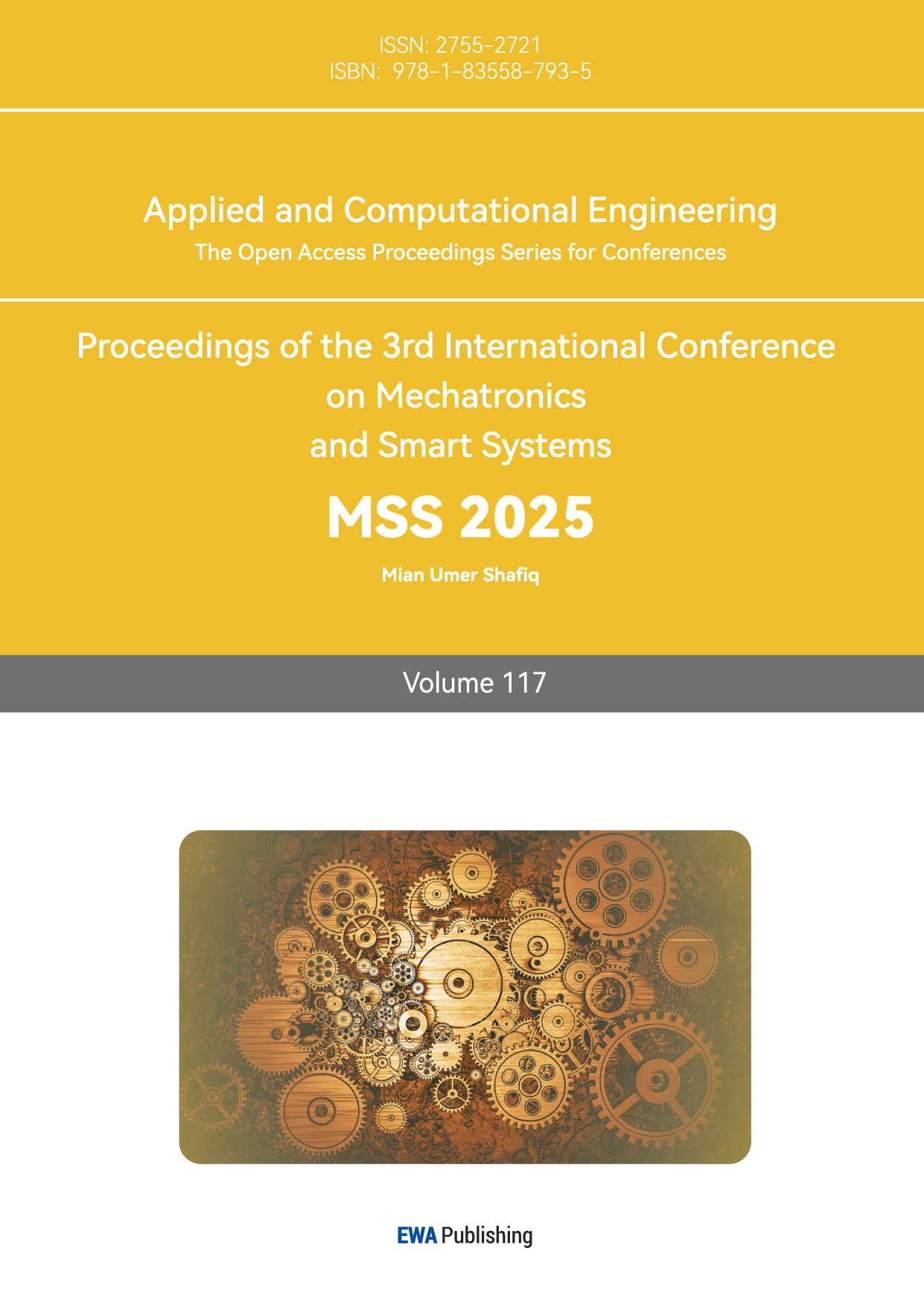1. Introduction
Global warming due to greenhouse gas emissions is becoming an increasingly serious problem [1], with a large portion of CO2 emissions being produced by automobiles [2]. This problem has led to the rapid development of electric vehicles, which are being promoted in many countries to replace conventional internal combustion engine vehicles with electric vehicles due to their low emission characteristics. However, due to limitations in battery technology, the batteries and associated reinforcements in electric vehicles make them heavier than conventional fuel vehicles, resulting in a lack of range. In contrast, fuel-efficient vehicles are more fuel-efficient at high speeds, resulting in longer range [3]. In addition, the air-conditioning system of electric vehicles requires a complete heating unit, while fuel vehicles do not, which also affects the range of electric vehicles. The actual discharge of the battery is also affected by the ambient temperature, further limiting the range of EVs. Due to the limitations of battery technology, it is difficult for electric vehicles to make significant breakthroughs in weight in a short period of time. Another way to increase the range is to reduce the drag force on the car. According to the research, air resistance is the primary resistance that the car needs to overcome under high speed conditions. So in optimising the aerodynamics of an electric vehicle becomes an important way to increase the range of an electric vehicle. However, the optimisation of the drag force may lead to an increase in the lift force of the vehicle making the vehicle more unstable at high speeds [4]. Therefore, optimising the aerodynamics of electric vehicles has become a very important part of the design. This paper will discuss the main causes of electric vehicle drag and the solutions to this problem in the context of related research.
2. Reasons for the air resistance of the car
Air resistance is mainly composed of viscous resistance and pressure resistance. Viscous resistance mainly refers to the resistance produced by the viscosity of the air and the roughness of the car surface when the air flows over the car surface. Viscous drag mainly occurs within the boundary layer. The boundary layer is a layer of fluid near the surface of a solid surface as the fluid flows over the surface. Within the boundary layer, the velocity of the fluid gradually increases from zero (at the solid surface) to the same velocity as the main flow. Therefore, the surface roughness of a car may be an influential factor in viscous drag. \( {F_{f}}=\frac{1}{2}\cdot ρ\cdot {v^{2}}\cdot {C_{f}}\cdot A \) . ( \( {F_{f}} \) ) is the frictional drag ( \( ρ \) ) is the air density ( \( v \) ) is the speed of the car ( \( {C_{f}} \) ) is the coefficient of friction ( \( A \) ) is the car surface area.
Pressure resistance is resistance due to the difference in pressure between the front and back of an object. When air flows through a car, the front of the air flows the slowest, creating a high-pressure region according to Bernoulli's principle P+ \( \frac{1}{2}\cdot ρ\cdot {v^{2}} \) = C and a low-pressure region at the rear. This difference in pressure between the front and rear creates a backward force called pressure drag. The reason for the low pressure at the rear of the car is that when air flows over the rear of the car, airflow separation occurs, creating a vortex region, which results in a lower pressure at the rear and increased pressure drag.
3. Vehicle air resistance solution
3.1. Minimising air resistance from the vehicle design exterior
In order to reduce viscous drag, a smoother surface is often considered to achieve the goal while the body area remains the same. However, increasing the surface smoothness may not be able to reduce the viscous drag of air to a large extent, as shown in a study on civil aviation technology, where the surface roughness is less than or equal to 400 micro inches of equivalent sand grains, as shown in Fig. 1, the viscous drag on the surface becomes almost undetectable.
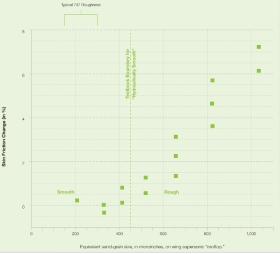
Figure 1: Relationship between surface smoothness and viscous resistance [5].
Although increasing surface smoothness does not have a significant effect on viscous drag reduction, adding special layers to the surface may have the effect of reducing air drag by reducing the amount of foreign matter (dust, animal feces, tree resin, etc.) adhering to the body of the vehicle while driving, thereby increasing the surface flatness in disguise [6].
The vast majority of the air resistance of a car is still generated by pressure drag, and the MIRA model responds to different car designs using three back configurations, i.e. Squareback, Fastback and Notchback. As shown in Figure 2. It can be seen that the 3 back shapes affect the passenger space on one hand, and on the other hand, they have an important effect on the drag, with flow structures of different scale vortices in the separation zone. All these structures contribute to the formation of a low pressure zone in the rear of the model. The size of the low pressure zone is related to the strength of the flow vortices, the size of the separation zone and the strength of the internal flow structures; the stronger the vortices and the larger the size of the separation zone, the lower will be the local pressure induced. [7]

Figure 2: Flow structures and the drag coefficients of an MIRA model with different backs[8].
In order to reduce the low pressure generated by the vortex area at the rear, adding a diffuser to the rear of the car is a good option. The diffuser is designed as an upward sloping area at the rear of the car, due to the increase of space volume of the diffuser along its length, the high speed airflow at the bottom of the car will be exported in the diffuser and expand the airflow, and its induced airflow can effectively reduce the vortex flow at the rear of the car as shown in the CFD simulation in Fig. 3.
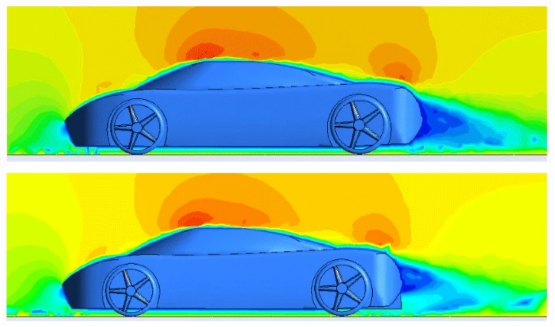
Figure 3: CFD simulation of a GT car with and without a diffuser[9].
It can be seen that the introduction of the diffuser introduces a gas that makes the vortex zone at the rear of the car smaller, making it more inclined to the shape of a water droplet, so the air resistance of the car is reduced by 3.87% [10].Furthermore, as illustrated in Fig. 4, the diffuser will speed up the airflow in the throat, creating a low pressure zone at the bottom of the vehicle. This will improve the vehicle's handling ability and grip.
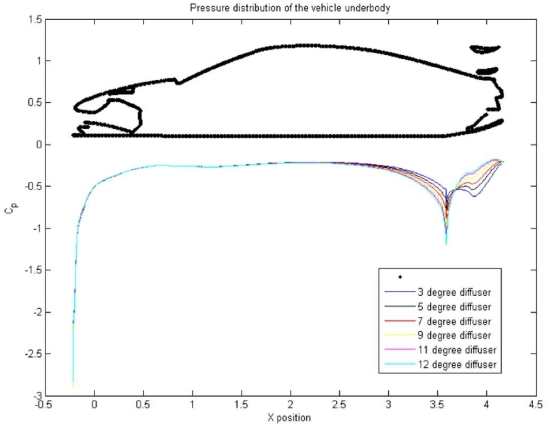
Figure 4: Pressure distribution at the bottom of a car with a diffuser [11].
At the same time the lip spoiler located above the rear end has a similar effect. A downward sloping rear roof extension is used which reduces the height of the tail flow [12]. In a CFD driven study it was shown that the drag coefficient of the vehicle fitted with a rear spoiler was reduced by 4.8%. In this study, 2 spoilers were selected i.e. square back and fastback rear spoiler. According to this reason, if one of the rear spoilers is placed at the back of the car, the low pressure zone will be annihilated slowly. The performance of the car is improved in terms of acceleration and the handling of the car [13].
3.2. Designing active aerodynamic components to increase or reduce drag in different operating conditions
The front air dam design of the car reduces the amount of airflow into the underbody of the car by extending the front bumper downwards to form a barrier to block airflow. Effectively creating a vacuum zone at the bottom of the car, this helps to reduce the lift of the car and increase the grip of the wheels, thus improving the stability of the vehicle at high speeds. (As shown in Figure 5)
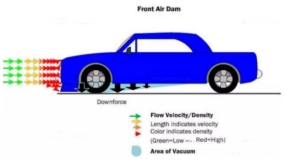
Figure 5: The working principle of the front air dam of a car [14].
The air resistance of a car can be roughly simplified as \( {F_{w}}=\frac{1}{2}ρA{C_{w}}{v^{2}} \) ,( A ) is the windward area of the car in square meters (m²), and this formula shows that the air resistance is directly proportional to the windward area of the car and the air resistance coefficient. Therefore an air dam at the front end of the car may lead to an increase in the air resistance of the car, in this case, a triangular air dam or a variable air dam is a good choice, a triangular air dam significantly reduces the wind resistance coefficient compared to an L-shaped air dam [15] see Figure 6.
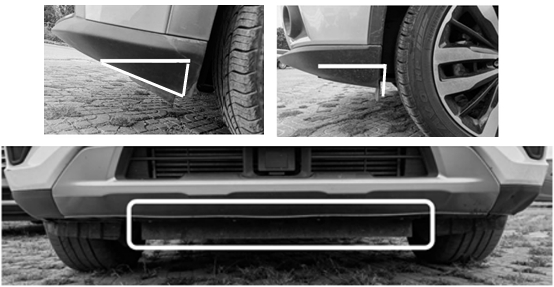
Figure 6: Different shapes of air dam[16].
The variable air dam, on the other hand, automatically adjusts its position according to the vehicle's speed and driving conditions. At high speeds, the air dams are deployed to optimise aerodynamics; at low speeds or in urban areas, the air dams are retracted to increase ground clearance and reduce the windward area of the car to reduce air resistance.
4. Conclusion
In the current electric vehicle market, almost all electric vehicles still face the problem of insufficient range. Most automakers try to reduce vehicle drag through aerodynamic optimisation, but in the process of reducing aerodynamic drag, many aerodynamic components that generate downforce are removed in order to maintain the handling of the vehicle. The absence of these components tends to cause the car to generate too much lift at high speeds, affecting driving stability and the driving experience. Therefore, how to balance the handling and aerodynamic drag of a car will be an important research topic in the future.
The aim of this study is to find and discover ways to optimise the aerodynamic performance of electric vehicles in order to solve the problem of insufficient electric vehicle range. The possibility of optimising the car's range by active and passive aerodynamic kits on the car is discussed, mainly through the reduction of air resistance. The results of the study validate the effectiveness of some of the solutions through practical optimisation data and wind tunnel simulations. Future research should further collect more data and test under multiple conditions to verify the feasibility and generalisability of the results.
Overall, this study provides an important theoretical and practical basis for the aerodynamic optimisation of electric vehicles. By considering various factors such as air resistance, vehicle weight, handling and stability, future research and design can further enhance the range performance and overall driving experience of electric vehicles.
References
[1]. United Nations Environment Programme. (2023). Broken Record Temperatures hit new highs, yet world fails to cut emissions (again): Temperatures hit new highs, yet world fails to cut emissions (again). In Emissions Gap Report 2023 (No. 978-92-807-4098–1). https://doi.org/10.59117/20.500.11822/43922
[2]. Fast Facts on Transportation Greenhouse Gas Emissions | US EPA. (2024, May). US EPA. Retrieved October 8, 2024, from https://www.epa.gov/greenvehicles/fast-facts-transportation-greenhouse-gas-emissions
[3]. Joost, W. J. (2012). Reducing vehicle weight and improving U.S. energy efficiency using integrated computational materials engineering. JOM, 64(9), 1032–1038. https://doi.org/10.1007/s11837-012-0424-z
[4]. Katz, J. (2016, Chapter 7). Automotive Aerodynamics. John Wiley & Sons.
[5]. Boeing. (n.d.). Boeing EDGE. Qtr_01 13, 15–20. https://skybrary.aero/sites/default/files/bookshelf/2246.pdf
[6]. LIU Jinsheng, XU Shengjin, WANG Qingyang, BAO Huanhuan, WANG Yong. Review of automotive aerodynamics research based on physical models[J]. Journal of Experiments in Fluid Mechanics, 2020, 34(1): 38-48. DOI: 10.11729/syltlx20190081
[7]. SCHVTZ T, DES AUTOMOBILS H A. Stromungsmechanik, Warmetechnik, Fahrdynamik, Komfort[M]. Wiesbaden: Springer Vieweg, 2013.
[8]. Nath, D. S., Pujari, P. C., Jain, A., & Rastogi, V. (2021). Drag reduction by application of aerodynamic devices in a race car. Advances in Aerodynamics, 3(1). https://doi.org/10.1186/s42774-020-00054-7
[9]. Afianto, D., Han, Y., Yan, P., Yang, Y., Elbarghthi, A. F. A., & Wen, C. (2022). Optimisation and efficiency improvement of electric vehicles using computational fluid dynamics modelling. Entropy, 24(11), 1584. https://doi.org/10.3390/e24111584
[10]. Eric, H., & Paul, L. (2018, April 19). Diffusers - How They Work. Versus Engineering. Retrieved October 8, 2024, from https://www.verus-engineering.com/blog/informative-8/diffusers-how-they-work-53
[11]. Julian, E. (2023, December 18). How To Reduce Drag And Lift With Hatchback And Wagon Rear Spoilers. HotCars. https://www.hotcars.com/reducing-drag-lift-hatchback-and-wagon-rear-spoilers/
[12]. Padmagari, N., & N.Sreenivas. (2017). Design and Analysis of a Car Rear Spoiler for Drag Reduction (e-ISSN: 2348-6848 p-ISSN: 2348-795X Volume 04 Issue 13). International Journal of Research. https://www.edupediapublications.org/journals
[13]. Car Aerodynamics Basics, How-To & Design Tips ~ FREE! (2016, March 25). Build Your Own Race Car! https://www.buildyourownracecar.com/race-car-aerodynamics-basics-and-design/
[14]. LI F Q, YANG Y, ZHANG W X. A Review on Technology Development for Automobile Aerodynamics[J]. Automotive Digest (Chinese), 2022(11): 51-56
Cite this article
Zhang,Y. (2025). Research on the Aerodynamics of Electric Vehicles. Applied and Computational Engineering,117,143-148.
Data availability
The datasets used and/or analyzed during the current study will be available from the authors upon reasonable request.
Disclaimer/Publisher's Note
The statements, opinions and data contained in all publications are solely those of the individual author(s) and contributor(s) and not of EWA Publishing and/or the editor(s). EWA Publishing and/or the editor(s) disclaim responsibility for any injury to people or property resulting from any ideas, methods, instructions or products referred to in the content.
About volume
Volume title: Proceedings of the 3rd International Conference on Mechatronics and Smart Systems
© 2024 by the author(s). Licensee EWA Publishing, Oxford, UK. This article is an open access article distributed under the terms and
conditions of the Creative Commons Attribution (CC BY) license. Authors who
publish this series agree to the following terms:
1. Authors retain copyright and grant the series right of first publication with the work simultaneously licensed under a Creative Commons
Attribution License that allows others to share the work with an acknowledgment of the work's authorship and initial publication in this
series.
2. Authors are able to enter into separate, additional contractual arrangements for the non-exclusive distribution of the series's published
version of the work (e.g., post it to an institutional repository or publish it in a book), with an acknowledgment of its initial
publication in this series.
3. Authors are permitted and encouraged to post their work online (e.g., in institutional repositories or on their website) prior to and
during the submission process, as it can lead to productive exchanges, as well as earlier and greater citation of published work (See
Open access policy for details).
References
[1]. United Nations Environment Programme. (2023). Broken Record Temperatures hit new highs, yet world fails to cut emissions (again): Temperatures hit new highs, yet world fails to cut emissions (again). In Emissions Gap Report 2023 (No. 978-92-807-4098–1). https://doi.org/10.59117/20.500.11822/43922
[2]. Fast Facts on Transportation Greenhouse Gas Emissions | US EPA. (2024, May). US EPA. Retrieved October 8, 2024, from https://www.epa.gov/greenvehicles/fast-facts-transportation-greenhouse-gas-emissions
[3]. Joost, W. J. (2012). Reducing vehicle weight and improving U.S. energy efficiency using integrated computational materials engineering. JOM, 64(9), 1032–1038. https://doi.org/10.1007/s11837-012-0424-z
[4]. Katz, J. (2016, Chapter 7). Automotive Aerodynamics. John Wiley & Sons.
[5]. Boeing. (n.d.). Boeing EDGE. Qtr_01 13, 15–20. https://skybrary.aero/sites/default/files/bookshelf/2246.pdf
[6]. LIU Jinsheng, XU Shengjin, WANG Qingyang, BAO Huanhuan, WANG Yong. Review of automotive aerodynamics research based on physical models[J]. Journal of Experiments in Fluid Mechanics, 2020, 34(1): 38-48. DOI: 10.11729/syltlx20190081
[7]. SCHVTZ T, DES AUTOMOBILS H A. Stromungsmechanik, Warmetechnik, Fahrdynamik, Komfort[M]. Wiesbaden: Springer Vieweg, 2013.
[8]. Nath, D. S., Pujari, P. C., Jain, A., & Rastogi, V. (2021). Drag reduction by application of aerodynamic devices in a race car. Advances in Aerodynamics, 3(1). https://doi.org/10.1186/s42774-020-00054-7
[9]. Afianto, D., Han, Y., Yan, P., Yang, Y., Elbarghthi, A. F. A., & Wen, C. (2022). Optimisation and efficiency improvement of electric vehicles using computational fluid dynamics modelling. Entropy, 24(11), 1584. https://doi.org/10.3390/e24111584
[10]. Eric, H., & Paul, L. (2018, April 19). Diffusers - How They Work. Versus Engineering. Retrieved October 8, 2024, from https://www.verus-engineering.com/blog/informative-8/diffusers-how-they-work-53
[11]. Julian, E. (2023, December 18). How To Reduce Drag And Lift With Hatchback And Wagon Rear Spoilers. HotCars. https://www.hotcars.com/reducing-drag-lift-hatchback-and-wagon-rear-spoilers/
[12]. Padmagari, N., & N.Sreenivas. (2017). Design and Analysis of a Car Rear Spoiler for Drag Reduction (e-ISSN: 2348-6848 p-ISSN: 2348-795X Volume 04 Issue 13). International Journal of Research. https://www.edupediapublications.org/journals
[13]. Car Aerodynamics Basics, How-To & Design Tips ~ FREE! (2016, March 25). Build Your Own Race Car! https://www.buildyourownracecar.com/race-car-aerodynamics-basics-and-design/
[14]. LI F Q, YANG Y, ZHANG W X. A Review on Technology Development for Automobile Aerodynamics[J]. Automotive Digest (Chinese), 2022(11): 51-56





